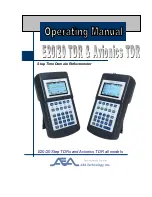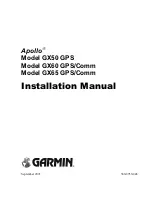
13
2.5 Pitot Tube and Static Port
There are 2 different pressure ports on the backside of the case:
2.5.1 Static Port
This is the port for the static pressure. It must be connected to the static port of the
aircraft. If you don't know where the static port of your aircraft is, ask the
manufacturer of the aircraft. A static pressure port is only necessary for aircraft with
closed passenger cabin. Open flex-wing Ultralights can leave the static port open
without connecting it anywhere.
2.5.2 Pitot Port
This is the port for the pitot pressure. The pitot tube of the aircraft is connected to the
pitot port. This is done with standard silicone hose. Check that the tube is neither
tangled nor sharply bent on its way from the pitot tube to the
ALPHA
ALPHA
ALPHA
ALPHA
MFD
. The pitot
tube should be free of turbulences for precise measurements. The pitot should be
mounted parallel to the aerodynamic air flow during cruise flight.
Because the ideal mounting of the pitot tube is different for every aircraft type, please
contact your aircraft manufacturer for special information.
3 Power On and Built - In Self-Test (BIT)
By pressing the <
ON/OFF
>-key the instrument is switched on. For a short period of
time all segments of the LC-display are illuminated in order to test the function of the
display. Next the instrument goes into CHECK-Mode. An internal self-test is executed
and all senders are checked for correct signals. If the
ALPHA
MFD
discovers a fault, it
displays an ERROR-code. A list of all possible ERROR-codes is listed in section 7.1.10 .
If everything is OK, you will see several "CHECK OK" messages and the instrument is
ready for operation. Among others the speed range (which is set by the factory) is
displayed. This is an additional safety check for the pilot.
4 Flight Management
4.1 Air Speed Indicator (IAS, CAS)
The
ALPHA
MFD
has an easy to read large
analogue display of the air speed. By using a
standard Pitot tube the Indicated Air Speed (IAS) is
displayed. Note: IAS shows the speed in every
altitude according to the measured dynamic air
pressure. At high altitudes the actual True Air
Speed (TAS) is higher than the IAS. Displaying the
IAS has several advantages and is also required by
various aviation authorities. For example the speed
never to exceed (Vne) or the stall speed (Vso or
Vs1) can always be read at the same spot of the


































